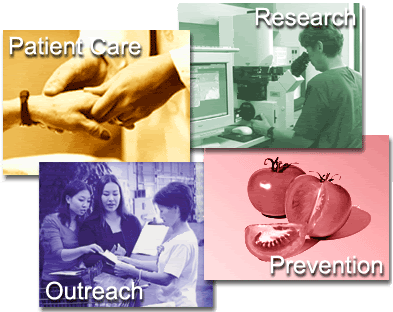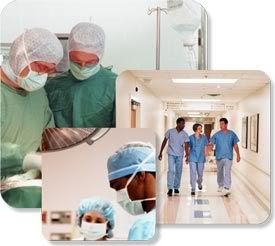Incidence of Cervical Cytological Abnormalities With Aging in the Women’s Health Initiative.
In the United States, 25% of new cases and 41% of deaths from cervical cancer occur among the 13% of the female population aged 65 years or older. However, few prior studies provide data on cervical cancer screening from large numbers of women aged 65 years and older. Sigurdsson reported that the frequency of high-grade intraepithelial lesions in women aged 60–69 years decreased as the number of prior normal cytology tests increased. Sawaya et al observed low rates of low-grade squamous intraepithelial lesion (LSIL) and high-grade squamous intraepithelial lesion (HSIL) among women aged 65 years and over with at least one previous normal cytology within the last 3 years. Accordingly, current recommendations by professional groups range from discontinuing screening at 65 years of age in previously screened women with a history of normal cervical cytology to lifelong screening at less frequent, but undefined, intervals. The American Cancer Society based its recommendation to cease screening at age 70 on mathematical modeling and demographic trends that may decrease the likelihood of older women having new sexual partners and thus new exposures to human papillomavirus (HPV).
DISCUSSION
Our results show that use of conjugated equine estrogen and medroxyprogesterone acetate over a 6-year period did not affect the incidence of high-grade cytological abnormalities and cervical cancer, although it did increase the incidence of overall cytologic abnormalities among postmenopausal women with normal baseline cytology. The annual incidences of new cervical smear abnormalities (LSIL and HSIL) and cervical cancer were much lower among women with a normal cervical smear at baseline than among women with an abnormal smear at baseline. Postmenopausal women with normal baseline cervical cytology had a relatively low risk of developing new cytological abnormalities, and the cumulative incidence of HSIL over a follow-up period of 3–6 years was less than 0.01%. Consistent with previous studies, our results show a modest age-related decrease in the incidence of any cytological abnormality, but we found no age-related decrease in the incidence of high-grade abnormalities or cancer. Additionally, past hormone use did not have any significant effect on the incidence of cytological abnormalities and cancer among postmenopausal women in our univariable and multivariable analyses.
Our estimate of the incidence of squamous-cell cervical cancer after negative cytology (0.93 cases per 10,000 person-years) was generally consistent with estimates reported from a racially, ethnically, and geographically diverse population-based study from the United States (prevalence 0.06%) and from a prospective study of an unselected female population from Sweden (0.8 cases per 100,000 person-year). At baseline screening, the prevalence of abnormal cervical cytology in our study sample was 2%, which is lower than the 5–7% reported from other studies of women aged 50 years and older. These differences in prevalence are likely due to selection bias because women participating in this trial may be at lower risk for abnormal cervical cytology because of regular screening histories before enrollment.
Postmenopausal women with normal cervical cytology at baseline who were randomly assigned to receive estrogen plus progestin had a significantly higher risk of low-grade cytological abnormalities than women who were assigned to receive placebo. However, estrogen plus progestin therapy did not increase the incidence of HSIL and cervical cancer among women with normal cervical cytology at baseline. Another important observation noted during 3–6 years of follow-up was an increase in the risk of ASCUS cytology among women assigned to estrogen and medroxyprogesterone acetate compared with placebo. A nonsignificantly higher incidence of any cytologic abnormality due to 58% greater incidence of ASCUS among women in the hormone group was also reported by HERS investigators.
The observed increase in the incidence of cytological abnormalities among participants assigned to estrogen plus progestin may be due to estrogen. Estrogen has been shown to affect dysplastic cells, because they have more estrogen receptors in their cytoplasm than malignant cells. In addition, the cytological changes are preserved due to cellular maturation and less drying artifact after estrogen administration, which may decrease the number of false-negative cytologies. The observed association between exogenous hormones and cervical dysplasia may also be mediated by the progesterone component because progesterone enhances the ability of viral DNA to transform cells that are infected with human papillomavirus.
Observational studies have demonstrated an increased risk of cervical cancer among younger women with human papillomavirus who are on oral contraceptives or pregnant, presumably due to progesterone effects, but this relationship remains unclear. However, menopausal hormone therapy has not been shown to increase the prevalence of HPV among postmenopausal women.
With regard to risk factors for cervical cancer, smoking and a history of hormone use were not significantly associated with abnormal cytology at baseline. However, women who reported sexual activity at baseline and at year 1 and not married or living as married had a significantly increased risk for development of HSIL on follow-up, independent of baseline cervical cytology. This risk is likely due to the increased chance for new exposure to HPV and a new sexual partner. The WHI did not collect information on acquiring a new sexual partner, the number of sexual partners, age at first intercourse, frequency of intercourse, or the presence of human papillomavirus infection. Additionally, information on sexual activity after year 1 was available on a small subsample (8%) of participants. For this reason, we were not able to identify women who acquired a new sexual partner, and we cannot determine the impact of these traditional risk factors on HSIL or cervical cancer incidence rates.
Our study results are derived from a large prospective cohort of postmenopausal women with long-term follow-up of cervical cytology. Our results confirmed the findings of previous studies on cervical cytology among postmenopausal women, but contribute new information on follow-up of abnormal cervical cytology among postmenopausal women, the risks associated with use of oral estrogen plus progestin, and the risk associated with continuing sexual activity among women who are not married or living as married. The size and geographic distribution of the sample and the completeness of data collection at each WHI study center are important strengths of this study. The WHI has 40 centers in a wide range of academic and community settings that were selected to maximize generalizability.
The main limitations of our study are that women participating in this trial may be at low risk for cervical cancer, and the study may be underpowered to estimate the differences in risk of HSIL and cervical cancer between women randomized to estrogen plus progestin and placebo. In general, the vast majority of cervical cancer cases occur among women who have not been previously screened or who have not had three consecutive normal cytology results. All women in the WHI Clinical Trial were screened and judged to be free of cervical cancer at or within 1 year before entry into the trial. Second, the results of interim steps in diagnostic evaluation and treatment, especially for LSIL, are risk-based and considered optional and sometimes inconsistent.
Our estimates of the risk of cervical cancer after negative results on cytological testing appear to be somewhat lower than estimates from other population-based studies. The low prevalence of cervical smear abnormalities at baseline is likely because the volunteers participating in the WHI clinical trial were healthier and at lower risk for cervical disease than women in the general population. Use of combined hormone therapy over a 6-year period increased the incidence of any cytologic abnormalities, but not the incidence of high-grade abnormalities, among postmenopausal women with normal baseline cytology. This study also confirms that traditional risk factors such as sexual activity continue to play a role in the development of cervical dysplasia and cancer in older women. These results are generalizable to postmenopausal women who have recently had a normal cervical smear or a smear with low-grade abnormalities, but they are not applicable to postmenopausal women who have never been screened or have not recently been screened.
Annual screening provides little if any benefit over triennial screening because the absolute risk of undiagnosed cervical cancer within 3 years after a normal cervical smear is very low. Our findings support the appropriateness of recommending triennial screening among low-risk women who are married or living as married and have previously normal cervical cytology. Although there is an age-related decrease in the incidence of cytological abnormalities, the incidence drops neither fast enough nor low enough to ignore the risk of high-grade cytologic abnormalities and cervical cancer in all women over the age of 70 years. Current recommendations to discontinue screening for elderly women do not take into account risk factors such as continuing sexual activity (which may involve new partners) and associated exposure to human papillomavirus. Our study suggests that sexually active unmarried elderly women may benefit from continued cervical cancer screening, even if they have previously had normal cervical cytology.




0 Comments:
Post a Comment
<< Home